Hiking up Mount Osceola—one of the 4,000 footers in the White 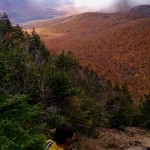 Mountains—last weekend with friends, I noticed that there were about equal numbers of men and women. We were all in our layers, climbing over the rocks, getting glimpses of a breathtaking blanket of orange amidst the first snow of the season. It was a wonderful place to be on a dramatic fall day. Our party consisted of three couples, and we merged very nicely. As far as I could tell, no men anywhere forged far ahead of women, seeing the point of the outing as staying together. There were some solo men on the trail, and some solo women too. We all went through steep sections, offering hands when needed, but — in an overall kind of way– the two genders seemed to be on even ground. When you’ve lived more than a half century with four older brothers and happen to have also gone to a mostly-male college, this kind of thing is noteworthy.
Mountains—last weekend with friends, I noticed that there were about equal numbers of men and women. We were all in our layers, climbing over the rocks, getting glimpses of a breathtaking blanket of orange amidst the first snow of the season. It was a wonderful place to be on a dramatic fall day. Our party consisted of three couples, and we merged very nicely. As far as I could tell, no men anywhere forged far ahead of women, seeing the point of the outing as staying together. There were some solo men on the trail, and some solo women too. We all went through steep sections, offering hands when needed, but — in an overall kind of way– the two genders seemed to be on even ground. When you’ve lived more than a half century with four older brothers and happen to have also gone to a mostly-male college, this kind of thing is noteworthy.
As I read up on the history of the White (the origin of that descriptor is apparently murky, but no, it probably wasn’t given in honor of the race, most common in this parts, with the same name) Mountains afterwards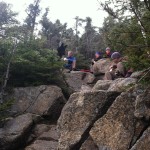 , however, it’s hard not to see the whole region painted with a masculine brush. Does “rugged” – a word often used to describe these peaks—always align more with the male half of the race? Back when names were being chosen, did a woman’s experience ever count?
, however, it’s hard not to see the whole region painted with a masculine brush. Does “rugged” – a word often used to describe these peaks—always align more with the male half of the race? Back when names were being chosen, did a woman’s experience ever count?
There are lots of good guidebooks, especially from the Appalachian Mountain Club, for hikers. The one I happen to have around the house is called The White Mountains: Names, Places & Legends by John Mudge (Durand Press, 1992). Now it’s true my family and John’s family happen to go way back together, so I could be a bit 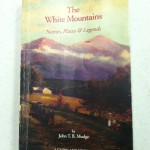 biased, but this is a very engaging little book, with a beautiful oil painting on the soft cover. And it’s not John’s fault at all that, page after page, I’m reminded that just about every blasted peak bears the name of some man: there are all those presidents, of course (certainly you don’t want me to list them) but then, in addition, there’s Tuckerman, Carter, Lafayette, Clay, Hancock, Field, Stickney, and Webster—just to name some of the fellas who never occupied the White House but still are immortalized, with rocky limbs sprawled out, and up. Granted, a handful of the names aren’t people at all — Cannon, Wildcat, the Flume – and we have to be glad that at least a few of the mountains commemorate various chiefs from Native American tribes, such as Osceola and Chocorua.
biased, but this is a very engaging little book, with a beautiful oil painting on the soft cover. And it’s not John’s fault at all that, page after page, I’m reminded that just about every blasted peak bears the name of some man: there are all those presidents, of course (certainly you don’t want me to list them) but then, in addition, there’s Tuckerman, Carter, Lafayette, Clay, Hancock, Field, Stickney, and Webster—just to name some of the fellas who never occupied the White House but still are immortalized, with rocky limbs sprawled out, and up. Granted, a handful of the names aren’t people at all — Cannon, Wildcat, the Flume – and we have to be glad that at least a few of the mountains commemorate various chiefs from Native American tribes, such as Osceola and Chocorua.
Still, though, the whole place is teeming with men. Or at least, that’s what we’re led to believe. Could one whole hunk of this state really be so tilted to one gender? This must, in part, explain the origin of Julie Boardman’s book, When Women Meet Mountains (Durand Press, 2001). I haven’t read it yet, but apparently she does a good job of describing a whole range of bold and ingenious females, largely unknown, who explored these peaks, probably some in long skirts.
I suppose the number of presiding men is actually down by one since the Old Man himself fell down in May of 2003.
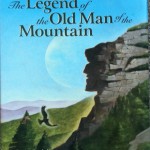
Legend has it, and I got a refresher on this from a beautifully illustrated children’s book, The Old Man was actually Chief Pemigewasset. He fell in love and married the daughter of the Mohawk Chief, Minerwa; she had to travel west to bid her ailing father goodbye, however, and never returned. Pemigewasset waited endlessly for her, finally froze to death, and then after burial his body was somehow immortalized by the Great Spirit, with that famous fixed gaze. He may have been the famous one, but he was there completely because of a woman.
And then, in a kind of odd twist on this tale, there was poor Nancy Barton, a girl who did in fact have a mountain – and a brook, and a cascade—named after her. Believe me, though, you wouldn’t want to go down in history this same way. The story was a revelation to me, so I can’t help but quote the sad account I found, on Wikipedia, in its entirety. Here’s a quoted section of a book by Charles Skinner, Myths and Legends of Our Own Land, which was originally written in 1896:
Another spot of interest in Crawford Notch is Nancy’s Brook. It was at the point where this stream comes foaming from Mount Nancy into the great ravine that the girl whose name is given to it was found frozen to death in a shroud of snow in the fall of 1788. She had set out alone from Jefferson in search of a young farmer who was to have married her, and walked thirty miles through trackless snow between sunset and dawn. Then her strength gave out and she sank beside the road never to rise again. Her recreant lover went mad with remorse when he learned the manner of her death and did not long survive her, and men who have traversed the savage passes of the Notch on chill nights in October have fancied that they heard, above the clash of the stream and whispering of the woods, long, shuddering groans mingled with despairing cries and gibbering laughter.”[4]
Some women, well–men too, I guess — may know from hard experience what it is to have a “recreant lover”: if someone leaves you in the lurch, especially after promising undying devotion, it’s anything but recreational. Poor Nancy paid the ultimate price. There’s even a painting of her, looking beatific in that “shroud of snow.” I saw a photograph of it in John Mudge’s book, and he kindly sent me a scanned version:
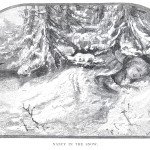
Surely, if any of us had known Nancy at the time, we would have urged her not to chase after a guy who had left her. “Come on girl, don’t you see that you can have a good life without him, that loser? You have your own skills; don’t make the mistake of depending on any man, even if it is 1788. Besides, there are other guys out here in these hills, some of them as solid as stone.” But off she went, soon to succumb.
The six of us didn’t stay up in the Whites long enough that evening to listen for her spooky groans, cries or laughter. In our little party, on an October day more than a couple of centuries later, the couples who went up all came down—still connected.
I felt grateful for that, grateful to have been there at all, with such a glorious mix of elements as far as the eye could see. And even though people long ago chose to see mostly men — some stodgy ones at that — in these mountains, we might attribute this, to use another word often bandied about these days, to something like “privilege.” Anyway, Mother Nature knows better. Minerwa never made it back to her loyal love, Nancy never recovered her lousy one; but all of us can venture up there today confident at least in the possibility of these mountains offering up beauty, and sometimes even lasting love, to each and every gender, in equal measure.
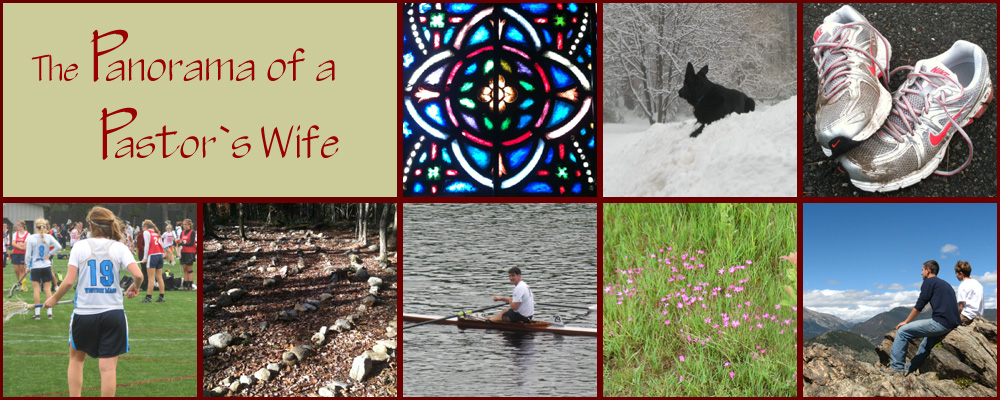
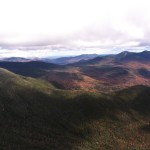
Nancy Lowry
Nifty observations and commentary – sad stories of Minerwa and Nancy.